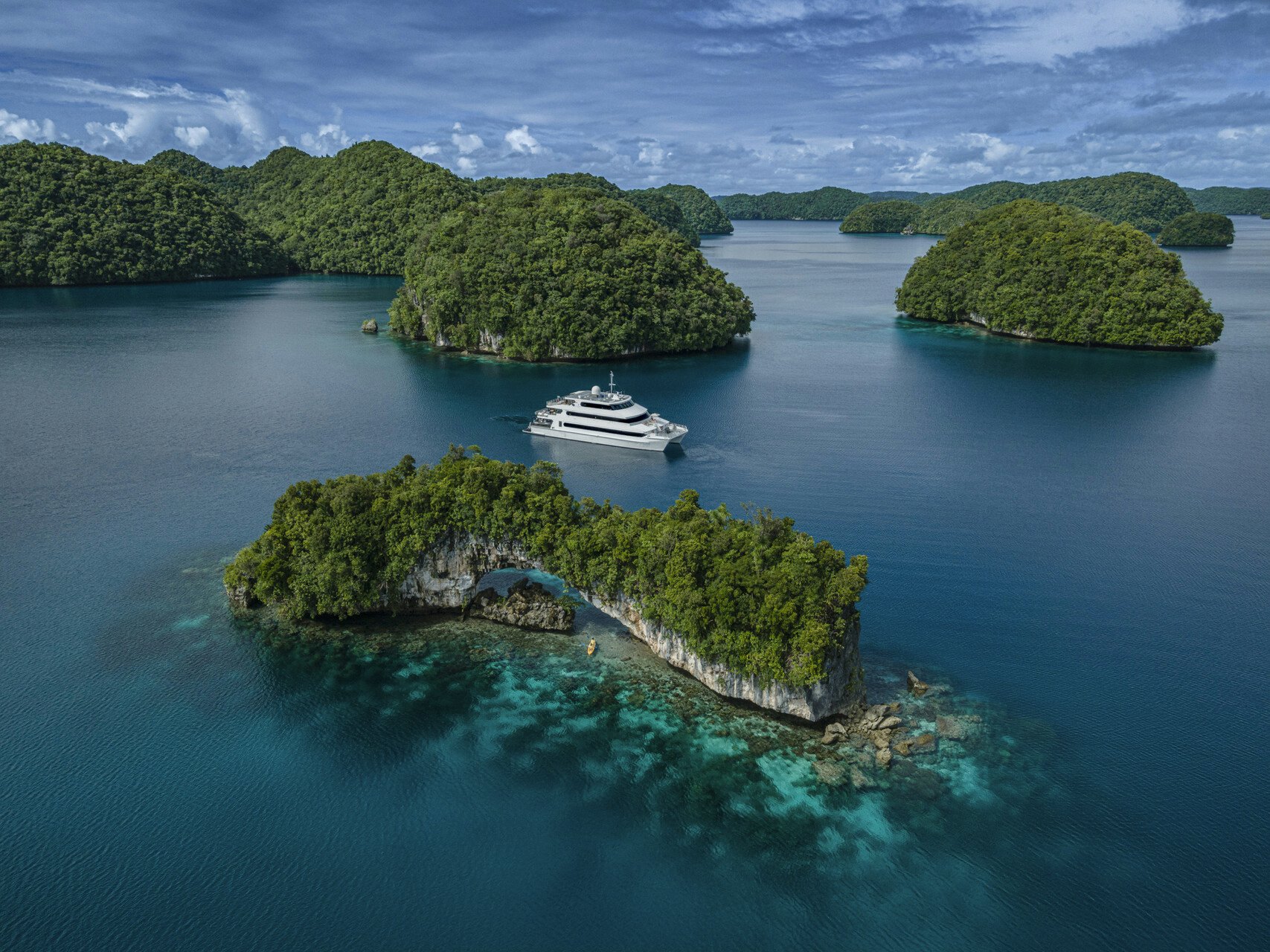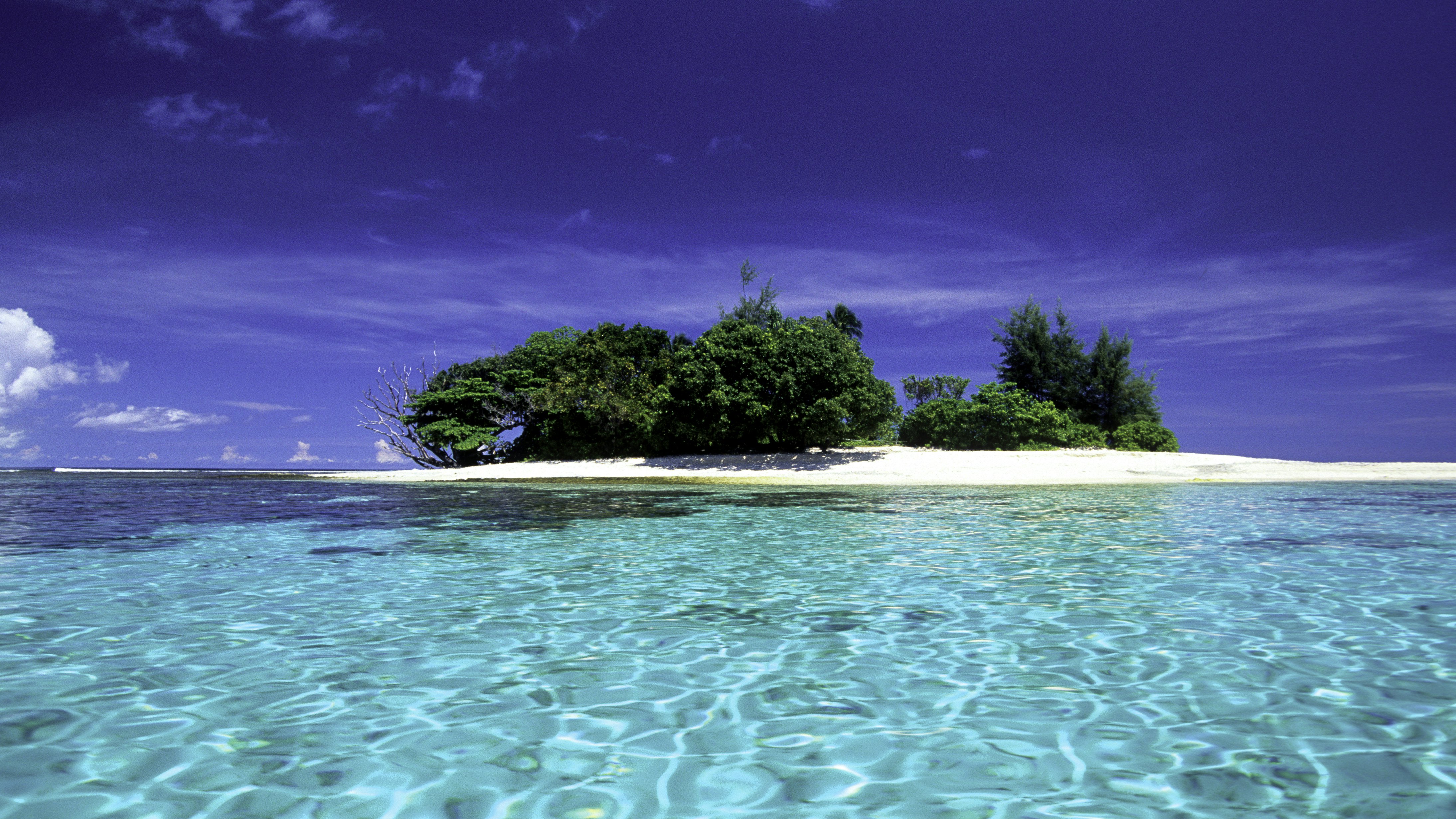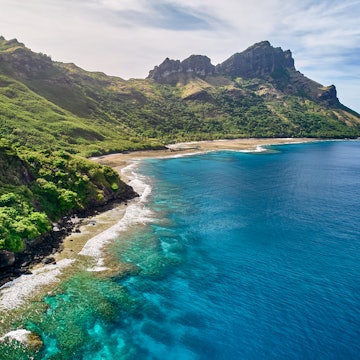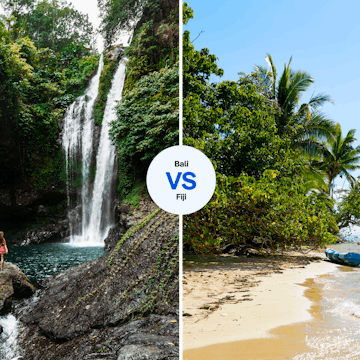

The Yasawa Islands, in northwest Fiji, are a scuba diver's dream. Mark Meredith/Getty Images
Australia may have the Great Barrier Reef, but its South and Western Pacific island neighbors also lay claim to some of the world’s best diving, with everything from teeming tropical reefs to coral-encrusted WWII wrecks to explore in their tropical waters. Located within the Coral Triangle, Papua New Guinea and the Solomon Islands boast extraordinary marine biodiversity. But each island nation has unique underwater draws, from surreal lava tunnels to spectacular drop-offs, rewarding macro (critter) diving to pelagics (big stuff) galore.
Select your perfect diving destination with our quick guide to the region’s key diving hubs.
Fiji
Best for soft corals and pelagics
Fiji is one of the South Pacific’s most established diving destinations, making it a great place to get certified. When you’ve got your dive ticket, consider avoiding the controversial shark-feeding sites of Beqa Lagoon on the main island, Viti Levu. Instead, admire marine life at top sites, including the Vatu-i-ra Passage on Viti Levu’s Suncoast, also known as the soft coral capital of Fiji. Or try the Mamanuca and Yasawa islands stretching north of Viti Levu, offering a great mix of sheltered reef dives and dramatic wall and drift dives. More adventurous divers will love the Somosomo Strait off of Taveuni island, home to the Great White Wall (arguably Fiji’s most famous dive site) and the remote Kadavu island, surrounded by the magnificent Great Astrolabe Reef.
Planning tip: Diving is available year-round, with liveaboards offering a great way to explore remote sites and avoid crowds.

Palau
Best for easy access to top-shelf diving
Palau lies just outside the Coral Triangle, but you’d never know it. Its ultra-clear, teeming waters aren’t only a product of its location, but also its forward-thinking marine conservation initiatives, including establishing the world’s first shark sanctuary in 2009. Expect to see plenty of sharks at the famed Blue Corner, and mantas year-round in the German Channel. There are also WWII wrecks to explore (the Japanese oil tanker Iro is a highlight), with most of Palau’s dive sites located within a 45-minute boat ride from the main tourism hub of Koror.
Planning tip: Diving is year-round, with ideal conditions from October to May. Given that there are currents to navigate at most dive sites, Palau is ideal for advanced divers.
Solomon Islands
Best for an off-grid diving adventure
An abundance of wrecks and flourishing reefs make the Solomon Islands a magnet for serious divers. There are four main diving hubs: the capital Honiara with its multiple WWII wrecks (including the popular Hirokawa Maru or B1); Gizo with a range of wrecks and reefs; Uepi, known for its gorgeous coral gardens and drop-offs; and Munda for superb wall dives and a chance of hammerhead sharks at Shark Point. Liveaboards are also available.
Planning tip: Dive resorts are generally basic and remote, with most reached via a domestic flight from Honiara, plus a boat trip. Diving is year-round, with the best conditions from April to November.

Papua New Guinea
Best for diving community cred
Papua New Guinea’s legendary diving is centered around Milne Bay and Tufi on the southeast coast of New Guinea; Kimbe Bay and Rabaul in New Britain; and Kavieng at the northern end of New Ireland. There are also some great WWII wrecks and reefs worth exploring near the capital, Port Moresby. It’s all about WWII wreck diving in Rabaul, while the other locations offer a mix of WWII wrecks and reefs, with mantas congregating in Milne Bay in September. Each region has a slightly different ideal diving season.
Planning tip: Similarly to the Solomon Islands, dive resorts are remote and typically appeal to more adventurous, confident divers. Liveaboards are also available.
Federated States of Micronesia
Best for the world’s best wreck diving
East of Palau, the Federated States of Micronesia is famous among divers for Chuuk (Truk) Lagoon, a natural harbor littered with the wrecks of more than 70 Japanese ships, planes and submarines destroyed in 1944 by a US bombing campaign. Elsewhere in Micronesia, Kosrae is ideal for novice divers and photographers owing to its gin-clear waters and colorful reefs. Pohnpei’s barrier reef offers some great channel dives, walls and drop-offs ideal for advanced divers, while Yap offers reef diving, caverns and swim-throughs with year-round manta action.
Planning tip: Chuuk Lagoon day trips and liveaboards operate from Weno island, which has a small international airport. Diving is year-round.
Vanuatu
Best for a famous wreck and lava tunnels
Diving in Vanuatu is synonymous with the SS President Coolidge, a 200m (656ft)-long luxury steamer–turned WWII troop carrier accidentally sunk in 1942 by US mines. Resting off Luganville on Espiritu Santo, the wreck is now a popular shore dive with around 50 sites to explore. Other popular local dive sites include Million Dollar Point, a dumping ground for thousands of tons of US construction equipment during WWII. Divers can also explore more than 20 dive sites including pretty coral gardens and small wrecks near the capital Port Vila (keep your eyes peeled for nudibranchs, or sea slugs), as well as 10 sites on Tanna, including a labyrinth of underwater caves and tunnels created by ancient lava flows and covered in corals.
Planning tip: April to October is Vanuatu’s peak diving season. With only one dive center on Tanna, this is the place to avoid the crowds.

French Polynesia
Best for sharks and liveaboards
Twenty shark species are known to roam the waters of French Polynesia, and getting up close to these marine predators is a highlight for many divers. Home to the grey reef shark-filled channels of Fakarava atoll and the immense natural aquariums of Rangiroa and Tikehau atolls, the remote Tuamotu archipelago is the sweet spot for keen divers, with a choice of dive resorts and liveaboards. There’s also good diving for all levels surrounding the more developed Society Islands of Moʻorea and Bora Bora, with good chances of spotting grey reef sharks and lemon sharks along with rays, turtles and dolphins. Time your dive trip between April and November for optimum conditions.
Planning tip: Notable underwater events include hammerhead shark season in Rangiroa from February to March, grouper mating season in Rangiroa around the July full moon, and humpback whale season in Mo’orea from August to November.
New Caledonia
Best for fantastical fan coral forests and pelagics
New Caledonia spoils divers for choice with more than 100 sites, including reefs, wrecks, drop-offs, caverns, caves and more. Some of the best sites are easily accessible from the capital, Noumea, including Passe de Dumbéa (Dumbéa Pass), known for its schools of grey reef sharks and caverns; and Passe de Boulari (Boulari Pass), celebrated for its large arboreal reefs attracting manta rays year-round. Accessed from the Île des Pins (Isle of Pines), the Vallee de Gorgones (Valley of Gorgonians) dazzles divers with a forest of huge, lacy sea fans. And that’s just the entrée.
Planning tip: Diving is year-round, with sharks and manta rays abundant from March to September.
Tonga
Best for underrated reefs with a chance of whales
Tonga is well-known for its humpback whale swimming experiences, but its rich reef systems also offer some wonderfully underrated diving. Its diving industry is centered on the main island of Tongatapu at the southern end of the 170-island archipelago; the central Haʻapai islands; and Vavaʻu, at the northern end. May to November is the best time to dive; from July to November, humpback whales migrate to the Tongan archipelago to mate, give birth and nurse their calves.
Planning tip: For the best chance of a close encounter with whales, book a snorkeling tour between dives.

Cook Islands
Best for hard coral gardens and drop-offs
The Cook Islands might not be able to match the marine biodiversity of the Coral Triangle, but there’s still plenty to see, with more than 40 dive sites to explore across the main island of Rarotonga and Aitutaki atoll, including hard coral gardens, canyons and drop-offs attracting plenty of fish. Many sites are suitable for beginners – and from July to October, you might even share a dive with a migrating humpback whale.
Planning tip: Diving is year-round, with the best conditions from April to November. Aitutaki’s dive sites are on the outer reef, requiring a longer boat trip to reach than Rarotonga’s sites.
Samoa
Best for an easy island holiday add-on
Samoa is currently home to just one dive center on the island of Savai’i, operating from March to October, limiting divers to exploring easy local sites, including coral gardens and the 1948 wreck of the missionary ship John Williams V. Green turtles are often sighted.
Planning tip: The main island of Upolu might not currently have a dive center, but there’s good snorkeling at the Palolo Deep Marine Reserve in the capital, Apia.














